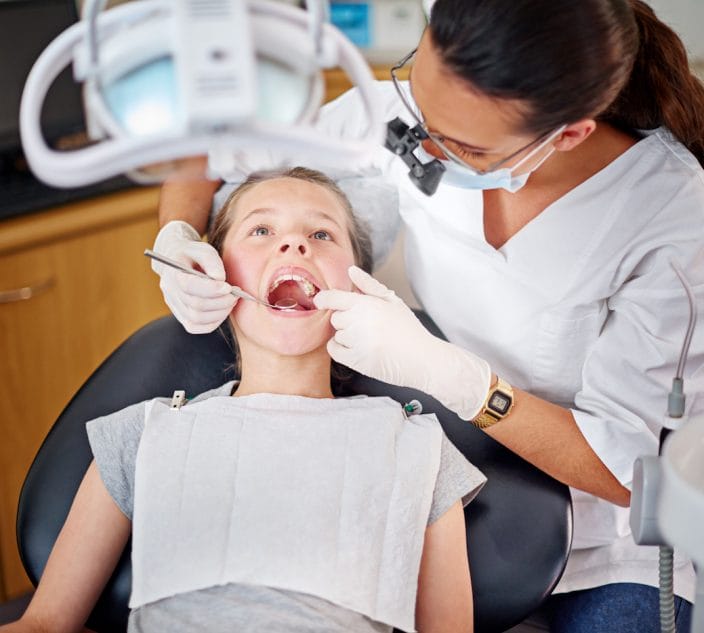
Data reveals how frequently celiac disease travels in the company of other conditions. Meet the people who live this reality every day.
“There’s one that I’ve forgotten. Oh my gosh, what is it, again?” Lauren Lippincott is counting down the number of diseases she has been diagnosed with over the years.
Mostly, the list rolls off her tongue as if by rote. Type 1 diabetes at the age of 4. In middle school, Raynaud’s syndrome, where constricting blood vessels would make her hands and feet freezing cold.
Ankylosing spondylitis, a degenerative disease of the spine that came on in the first semester of her freshman year in college, leaving her unable to walk to class.
Then came celiac disease, which was discovered when she was 24 and working with a dietitian to find a diet that would help to ease the pain in her body. But for the life of her, she can’t remember the fifth one.
“Alopecia areata?” this writer suggests, having researched autoimmune connections. “That’s it!” Lippincott replies. “I was 16 and my hair started falling out in clumps. It was awful. Actually, it was awful every time I got a new diagnosis – like a bomb had dropped into my life. It would be like, ‘Here we go again,’ and I would shut down, betrayed by my body and overwhelmed by the effort it took to feel well.”
Now 34, Lippincott, who lives in the Seattle area with her husband and son, is an extreme example of what specialists already know: if you have one autoimmune disease, such as celiac disease, there is a good chance you may have other conditions, too.
Significant Association with 17 Disorders
Dr. Jane Buckner, a Seattle-based rheumatologist who has treated Lippincott, says now that the genome has been sequenced, there is a better, if still incomplete understanding of at least some of that risk of additional disease.

says it felt like “a bomb had dropped”
into her life every time she got a
new diagnosis.
“We do know there are other factors, too, which are broadly linked with environment and lifestyle,” notes Buckner, who is president of the Benaroya Research Institute, a non-profit organization known for research into immune disorders.
“With celiac disease, what’s so interesting is that you have this autoimmunity that involves the gut – and a lot of our tolerance, or intolerance, for foreign things starts at the gut level,” says Buckner. “And when you have a gut-immune system that is disturbed, that may promote other inflammatory disorders as well.”
But until recently, there was scant hard evidence to back up mostly anecdotal observations. Now, a database study of almost 36 million people has found a significant association between celiac disease and 17 other disorders. Thirteen of them are autoimmune conditions, including Type 1 diabetes, Crohn’s disease, rheumatoid arthritis and ulcerative colitis.
As in other studies, autism was shown to have a high chance of co-existing; children with the spectrum disorder were 20 times more likely than those without to have celiac disease. As well, a person with pancreatitis is 25 times more likely to have celiac, and migraine had a notably strong association.
Dr. Daniel Karb, the study’s lead author and an internal medicine resident at University Hospital Case Medical Center in Cleveland, Ohio, used the huge Explorys database for this research. That database collects electronic health data from integrated healthcare systems across the United States. Of the 35,854,260 people listed in it, 83,090 were diagnosed with celiac disease between 2012 and 2017.
Karb chose the condition as his control model because the sample size wasn’t overwhelming, and since it is such a “hot topic”.
Startling Line with EoE
“Besides, autoimmune disorders go hand in hand,” he said in an interview. “We don’t understand too much about them – there’s still a lot to be discovered – but it made me happy to see the correlation.”
A surprising revelation, however, was an association with a disease that’s not autoimmune. Those with eosinophilic esophagitis (known as EoE), a chronic inflammatory form of food allergy that can cause swallowing difficulty, gastrointestinal distress and other symptoms, were found to be nine times more likely to have celiac disease.
“The most startling was the link with EoE,” says Karb, “Otherwise, we weren’t surprised, but it was gratifying to see the hard numbers.”
Celiac disease is one of the autoimmune conditions. If you have it, your body will respond to the presence of gluten – a protein in wheat, barley and rye products – in the small intestine. To prevent the protein from circulating in the body, the immune system response begins to destroy the villi, small projections in the intestinal lining that act as gatekeepers to the rest of the blood system.
The result is that other key nutrients don’t make it through, either. This leads to a confusing array of symptoms – from gastrointestinal distress to osteoporosis and brain fog – that can take up to 10 years to diagnose as celiac disease.
That’s why specialists such as Buckner and Dr. Alessio Fasano, a pediatric gastroenterologist and celiac expert at Massachusetts General Hospital in Boston, recommend a blood test to screen for signs of celiac disease if a patient has symptoms that cannot be easily explained.
“It only costs $45 in the U.S. and can save you a lot of trouble in the future,” says Fasano. “The thinking right now is that if your intestine is destroyed in any way, if stuff leaks through before it is completely digested and if you have a genetic predisposition to develop food allergies like EoE, then treating your leaky gut may help.
“Of course,” he continues, “this theory must be supported by additional data and studies – but that shouldn’t stop us from trying to help patients when waiting 10 years to be diagnosed with celiac disease may only increase the risk of developing other conditions.”
Karb admits that because the Explorys database does not specify how the celiac disease was diagnosed (the current gold standard is an intestinal biopsy), he and his co-authors have encountered some resistance to getting the study published. Nonetheless, the findings certainly ring true to specialists or to patients such as Lippincott and their families, who live it every day.
Celiac Test ‘Final Puzzle Piece’
For Annie Miller, the visits to doctors’ offices seemed endless. There were rheumatologists, and neurologists, and gastrointestinal specialists. Her symptoms were so diverse, she was tested five times for Lyme disease, which comes from a tick bite and can lead to joint pain, extreme fatigue and nausea.
She was so tired, she was living each day mostly in a narcoleptic-like haze, fighting to stay awake at work and falling into bed as soon as she got home. At one point, she even ended up in treatment for an unspecified eating disorder because, as she puts it, “when I didn’t eat, I felt better.”
Then in 2008, an aunt in Iowa read an article about celiac disease and suggested that her niece be tested for the condition. “At first, I thought ‘no way’ because I’d been tested for everything under the sun, all to no avail,” says Miller, an IT specialist, part-time singer, wife and mother of two who grew up in Seattle and now lives in Minneapolis.
“But it turned out to be nearly the final piece of a puzzle doctors had been trying to put together for years.”
At the same time she learned she had celiac disease, doctors told Miller she had EoE. Overwhelmed with learning about how to live a life free of gluten, she didn’t think to question them about the second condition, or their prescription for Prilosec, a medication used in the treatment of gastroesophageal reflux disease and peptic ulcers.
“I had complained of some heartburn and they said taking two pills a day for the rest of my life would make me feel better,” the 36-year-old recalls. “Then, they sent me on my way.”
Since then, Miller has assiduously monitored her diet and she undergoes biopsies on a regular basis that show the lining of her small intestine has healed. Interestingly enough, the longer she was on a gluten-free diet, the EoE symptoms quieted down to the point that, save for the duration of her two pregnancies, she has managed to stop taking Prilosec.
“During pregnancy, a lot of symptoms came back for me, which I guess is not that surprising,” she says.
Trifecta Diagnosis Changed Girl’s Life

and Hashimoto’s thyroiditis. The 10-year-old
has had an amazing attitude.
Tricia Bates remembers rushing her younger daughter, Samantha, to the hospital emergency in December 2015 in Clearwater, Florida, as if it was yesterday. The girl, 7 at the time, had lost so much weight and was suffering from headaches to the point that Bates’ own mother said: “There’s something wrong. Get it checked out, now.”
Over the next two weeks, the family would learn that Sam, as she is known, had Type 1 diabetes, celiac disease and Hashimoto’s thyroiditis, an autoimmune condition that can lead to an underactive thyroid gland. The endocrinologist said: “You’ve hit the trifecta. It’s quite common for these three diseases to go together.”
At first, Bates panicked. How would Sam cope? How would she? “That last question was silly, I know, but I was so ignorant,” she admits. “Watching my daughter ask with tears in her eyes at how many diseases she had and not knowing at the time how to keep her healthy, it was probably the worst period in my life.”
In what seemed like an instant, the family – Sam, her big sister Alex and their parents – started a crash course in dietary restrictions and daily glucose monitoring for diabetes.
In addition, Sam had to start taking a pill every day to control the Hashimoto’s. “In a way, that was the easiest to deal with – because you just take a pill and go on with your day,” says Bates, a teacher. “For the rest, I took a two-month leave from work and learned everything I could.”
As a family, the decision was taken to make the home completely gluten-free. Bates cleared out her pantry, learned how to read labels and, with lots of trial and error, adapted her cooking and baking. When Sam started to play that winter on a softball team, her mom was there as a coach, hovering, protective and scared.
“There were times when I broke down in front of her,” Bates says. “I think there are times when it’s OK for you to let your kids see you break down, as long as you don’t make them feel they are a burden. And it has definitely gotten better.”
Amazing Attitude to New Reality
Sam has shown resilience and an amazing attitude. “There’s no ‘Why me?’ says her mother. Once the initial shock was over, she would say, “Mom, why are you upset? Get over it!”
Now 10, Sam has much of her routine, including monitoring her glucose levels, down to a fine art. Still, being a kid, there are those times when she chafes at her situation. Like when there’s food she can’t eat in the classroom. “I don’t want to be upset about it, but I can’t help it,” Sam says. “I don’t want to have to be different from everyone else.”
One day this fall, Sam’s insulin pump started beeping in class because it needed to be changed soon. As other kids started looking around for the source of the noise, she stayed quiet because she felt it wasn’t anyone’s business.
“People should just know that some kids need things to help them – like hearing aids, or an insulin pump. It shouldn’t be a big deal.” As for what she’d tell other kids in her position, the most important piece of advice is to try to accept that, mostly, being different is OK.
“You may have a disease to deal with, but you can still do anything. I am a happy person because I like to have fun and enjoy all the things that I do.”
Back in Seattle, Lippincott, diagnosed with five autoimmune diseases, has turned the loneliness she felt – and sometimes still feels – into her life’s work as a wife, as a mom and most of all, as a therapist who counsels others facing health challenges. She tells patients they have to learn to stand up for themselves because, oftentimes, their conditions may be invisible to others.
“For a long time, I struggled,” Lippincott says. “My major point in therapy is that this is the one body you are going to have, so how do you want to go through life with it? Instead of challenging or fighting back against your illness, try to find the joy in your life and health.”
Related Reading:
What’s to Blame In Diabetes and Celiac Disease Link?
Celiac Disease, Gluten Symptoms Linked to Eating Disorders, Even Anorexia
What’s the Link Between EoE and Celiac Disease?





